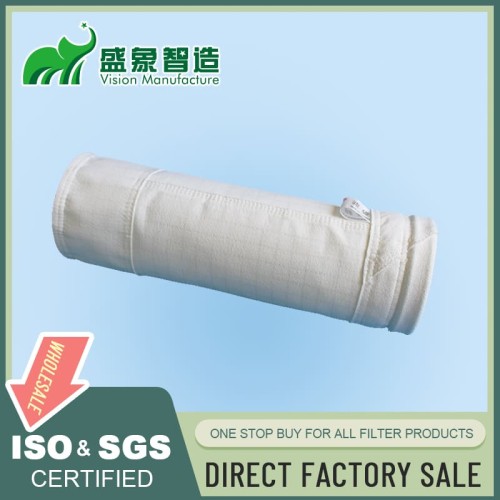
Dust Filter Socks Improve Air Quality in Industrial Environments
I. Introduction
In industrial settings, controlling dust is not just about maintaining cleanliness but is crucial for protecting worker health and prolonging the lifespan of machinery. This section introduces dust filter socks, versatile tools in managing industrial dust, highlighting their role in enhancing workplace safety and equipment longevity.
II. Types of Dust Filter Socks
Dust filter socks come in various types, each suited to different environmental needs and dust characteristics:
- Fabric Filter Socks: Commonly used for general dust collection, made from materials like polyester or nylon.
- Pleated Filter Socks: Increase surface area for filtration, offering improved efficiency.
- PTFE Membrane Filter Socks: Provide high filtration efficiency and resistance to chemical attacks.
- Specialty Material Filter Socks: Include options like fiberglass or blended materials for specific industrial applications.
III. Materials Used in Dust Filter Socks
The effectiveness of dust filter socks largely depends on their material composition:
- Polyester: Widely used due to its durability and cost-effectiveness.
- Polypropylene: Offers excellent chemical resistance and lower moisture absorption.
- Nylon: Known for its strength and flexibility.
- PTFE (Teflon): Highly resistant to chemicals and temperatures.
- Fiberglass: Suitable for high-temperature applications.
- Blended Materials: Combine properties of different fibers to meet specific filtration needs.
IV. Design Features
Design aspects of dust filter socks are crucial for their performance:
- Length and Diameter Options: Tailored to fit various dust collection systems.
- Top and Bottom Fitting Types: Ensure a secure fit and easy installation.
- Pleating and Surface Area Enhancement: Increase the effective filtration area within a compact design.
- Reinforcement Techniques: Enhance the durability and lifespan of the socks.
V. Applications Across Industries
Dust filter socks are utilized across a broad range of industries:
- Woodworking and Furniture Manufacturing: Capture wood dust, which can be hazardous to health.
- Metalworking and Fabrication: Essential for collecting metal filings and dust.
- Food Processing and Packaging: Prevent contamination of food products.
- Pharmaceutical Production: Maintain clean environments crucial for product purity.
- Chemical Processing: Filter out toxic and hazardous particulates.
- Cement and Construction Materials: Manage dust in environments with high particulate levels.
VI. Operational Principles
Understanding the operational dynamics of dust filter socks is key to maximizing their efficiency:
- Dust Capture Mechanisms: How socks trap and contain dust particles.
- Filtration Efficiency: The effectiveness of socks in removing particulates from the air.
- Pressure Drop Management: Ensuring minimal airflow resistance to maintain energy efficiency.
- Cleaning Cycles and Methods: Regular maintenance routines to sustain performance.
VII. Installation Considerations
Proper installation is critical for the effectiveness of dust filter socks:
- Proper Sizing and Selection: Matching socks to the specific needs of the system.
- Mounting and Attachment Methods: Secure installation to prevent bypass and ensure efficient filtration.
- System Integration: Ensuring compatibility with existing dust collection systems.
- Initial Break-in Procedures: Steps to condition the socks for optimal performance.
VIII. Maintenance and Cleaning
Regular maintenance ensures the longevity and efficiency of dust filter socks:
- Regular Inspection Routines: Scheduled checks to identify potential issues.
- Cleaning Techniques: Methods like pulse-jet, shaker, or reverse air that keep the socks clean and functional.
- Replacement Indicators: Knowing when to replace socks to maintain optimal filtration.
- Troubleshooting Common Issues: Addressing problems to minimize downtime and maintain air quality.
IX. Regulatory Compliance
Dust filter socks help facilities meet stringent regulatory requirements:
- OSHA Air Quality Standards: Ensuring compliance with workplace safety regulations.
- EPA Emissions Regulations: Meeting environmental standards for particulate emissions.
- Local and State Air Quality Requirements: Adhering to regional environmental regulations.
- Industry-specific Guidelines: Following best practices and standards specific to each industry.
X. Cost Considerations
Evaluating the cost-effectiveness of dust filter socks involves:
- Initial Capital Investment: Considering the upfront costs of system installation.
- Operational Costs: Ongoing expenses related to energy use and maintenance.
- Maintenance and Replacement Expenses: Costs associated with regular upkeep and part replacement.
- ROI Analysis and Payback Period: Assessing the financial return on investment over time.
XI. Environmental Benefits
Using dust filter socks has a positive environmental impact by:
- Reduced Airborne Particulate Emissions: Minimizing pollutants released into the atmosphere.
- Improved Workplace Air Quality: Enhancing the air quality both within and outside of industrial facilities.
- Energy Efficiency Contributions: Reducing energy consumption through efficient dust collection.
- Material Conservation Through Reclamation: Facilitating the recovery of materials from collected dust.
XII. Case Studies
Illustrative examples from various industries demonstrate the effectiveness of dust filter socks in enhancing air quality, solving specific challenges, and delivering quantifiable improvements.
XIII. Technological Advancements
Future developments in dust filter technology include:
- Advanced Filter Media and Designs: Enhancements that improve durability and filtration efficiency.
- Smart Monitoring and Predictive Maintenance Systems: Incorporation of sensors and monitoring systems for better management.
- Energy-efficient Fan and Motor Technologies: Innovations that reduce maintenance demands.
- Integration with Plant-wide Digital Systems: Streamlining operations across facilities.
XIV. Conclusion
Dust filter socks are essential components in maintaining optimal air quality in industrial settings. With their ability to adapt to various applications and their effectiveness in particle removal, they continue to be a preferred choice for industries aiming to enhance their environmental compliance and operational efficiency. As filtration technology evolves, these filters are poised to play an even more crucial role in industrial air quality management.
Leave a comment

